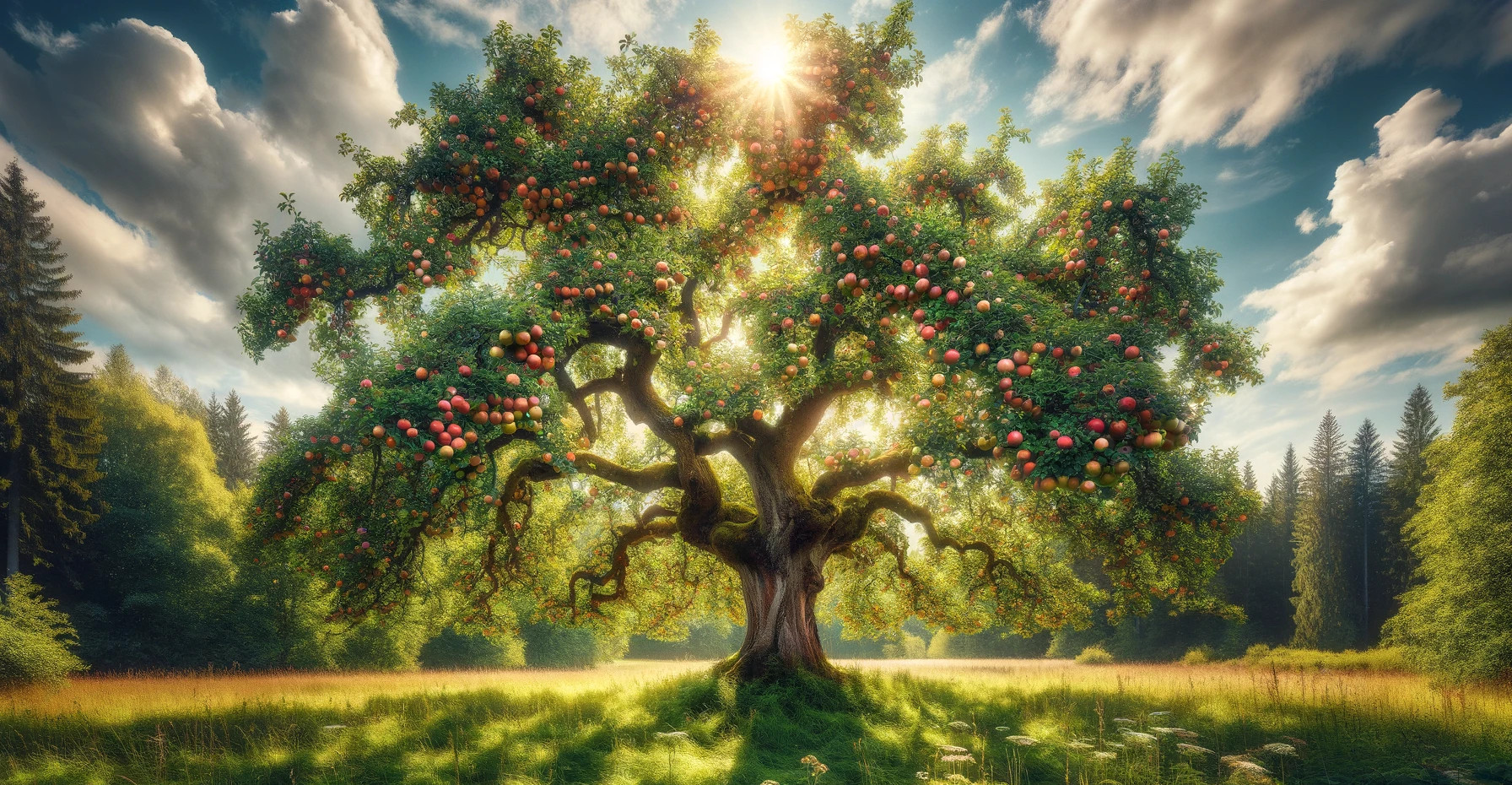Growing heirloom varieties of vegetables and fruits (a plant can claim heirloom status once it has a pedigree of 50 years) offers several compelling benefits. Heirlooms, passed down from generation to generation, often showcase unique flavours, colours, and shapes that can enhance culinary experiences and inspire creativity in the kitchen. Because they are adapted to specific local conditions over many years, heirlooms can be more resilient to local pests, diseases, and climate variations, potentially reducing the need for chemical inputs. Cultivating heirloom varieties also contributes to biodiversity, preserving genetic diversity that might be absent in commercially dominant breeds. Additionally, growing heirlooms helps sustain agricultural heritage and connects gardeners with cultural and historical traditions, creating a deeper sense of place and community involvement.
Heirloom fruits, such as apples, carry a rich heritage that extends beyond their delightful flavours. These varieties, cultivated over generations, are prised for their distinctive tastes and textures, making them ideal for various culinary uses. For example, certain heirloom apples are celebrated as excellent cooking apples, holding their shape beautifully when baked in pies or cooked down into sauces, while others are preferred for fresh eating due to their crisp texture and balance of sweet and tart flavours. Moreover, heirloom apple varieties often possess unique storage qualities, with some maintaining their integrity and flavour long after harvest. By choosing to grow and consume these historic apples, individuals support biodiversity and the preservation of agricultural traditions, ensuring that these valuable fruit varieties continue to thrive and remain available for future generations.
Heirloom tomatoes, revered for their rich flavours and diverse colours and shapes, have a particularly strong tradition in Eastern Europe, especially Russia. Many heirloom varieties that are popular today originated from this region, reflecting the area’s deep agricultural heritage and adaptability to the local climates. Russian and other Eastern European heirlooms are known for their robustness and ability to thrive in cooler, shorter growing seasons, making them ideal for similar climates worldwide. These varieties often feature unique, intense flavours and a wide range of colours, from deep reds to vibrant yellows and even striking blacks, offering a palette of tastes that are as varied as their appearances. By cultivating these heirloom tomatoes, gardeners not only enjoy superior taste and aesthetic variety but also contribute to preserving genetic diversity and cultural history.
Heirloom plants are now available in dwarf varieties, which is a boon for those with limited gardening space. These compact versions of traditional heirloom varieties are specifically bred to produce full-sized fruits on smaller, container-friendly plants. This development makes it possible for individuals living in urban environments or with restricted outdoor space, such as balconies or small patios, to enjoy the rich flavours and unique characteristics of heirloom vegetables and fruits. Dwarf heirlooms retain the genetic qualities and tastes of their larger counterparts, ensuring that even in a condensed form, gardeners do not have to compromise on the authentic experience of growing and tasting heritage varieties. This innovation expands the accessibility of gardening, allowing more people to engage in growing their own food and connecting with agricultural traditions.
The exchange of seeds among gardeners and the use of propagation techniques are vital practices for preserving and perpetuating heirloom varieties into the future. Seed swapping allows gardeners to share rare and unique heirloom seeds, spreading genetic diversity and encouraging the cultivation of multiple varieties across different regions. This practice not only strengthens the genetic pool but also fosters a sense of community and cooperation among growers. Meanwhile, effective propagation techniques, such as grafting, cuttings, or saving seeds, ensure that these cherished varieties can be maintained and multiplied without losing their distinctive traits. By engaging in these practices, gardeners contribute to the sustainability of heirloom varieties, ensuring that these treasured old food types are not only preserved but also thrive for generations to come. This collective effort helps maintain biodiversity and enriches our global culinary and cultural heritage.
